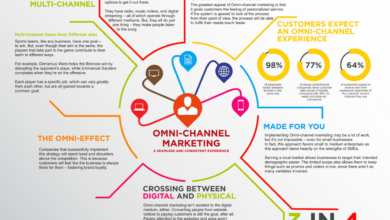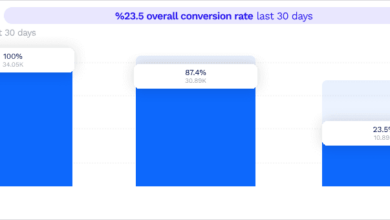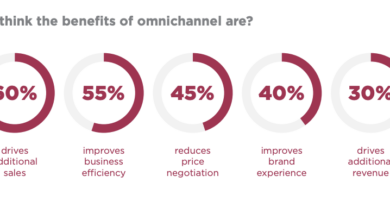
The Benefits of Headless Commerce The Era of Selling Online
The benefits of headless commerce the era of selling online are transforming how businesses approach e-commerce. No longer shackled by monolithic platforms, companies are embracing the flexibility and scalability offered by this innovative architecture. This means faster websites, personalized shopping experiences, and the ability to adapt quickly to the ever-changing digital landscape. We’ll explore exactly how headless commerce is revolutionizing online sales and what it means for your business.
From enhanced customer experiences driven by speed and personalization to the streamlined content management and improved , the advantages are compelling. We’ll delve into the key differences between headless and traditional e-commerce, examine real-world examples of successful headless implementations, and discuss the crucial aspects of scalability, security, and cost-effectiveness. Get ready to discover how headless commerce can propel your online business to new heights.
Defining Headless Commerce in the Online Selling Landscape
Headless commerce represents a significant shift in how businesses approach online selling. It’s a departure from traditional monolithic e-commerce platforms, offering increased flexibility and scalability for businesses of all sizes. Understanding its core architecture and advantages is crucial for navigating the modern digital marketplace.
Headless Commerce Architecture
A headless commerce system separates the frontend presentation layer (what customers see and interact with) from the backend infrastructure (managing products, inventory, orders, etc.). Imagine it like this: the frontend is the storefront, beautifully designed and tailored to the customer experience, while the backend is the warehouse, efficiently managing all the behind-the-scenes operations. This decoupling allows for independent updates and improvements to both without affecting the other.
The frontend can be built using any technology (React, Vue, Angular, etc.), offering immense design freedom, while the backend handles the complex business logic and data management. The two communicate via APIs (Application Programming Interfaces), acting as messengers to relay information back and forth.
Headless vs. Traditional E-commerce Platforms
Traditional e-commerce platforms are often monolithic, meaning all components are tightly integrated. This makes customization difficult and limits flexibility. Updates often require significant downtime, impacting sales. Headless commerce, conversely, provides the freedom to update the frontend without affecting the backend, and vice-versa. This allows for rapid innovation and faster time-to-market for new features and designs.
It also enables businesses to easily adapt to different channels, like mobile apps, social media platforms, or smart speakers, without rewriting core functionality.
Advantages of Decoupling Frontend and Backend
Decoupling the frontend and backend offers several key advantages. First, it allows for increased agility and faster time-to-market. Businesses can quickly launch new features, update designs, and adapt to changing market trends without lengthy development cycles. Second, it improves scalability. The backend can handle increasing traffic and orders without affecting the frontend performance.
Third, it enhances omnichannel capabilities. Businesses can seamlessly integrate their e-commerce operations across multiple sales channels. Finally, it boosts personalization capabilities. The decoupled architecture allows for more sophisticated customer segmentation and targeted marketing efforts.
Examples of Businesses Using Headless Commerce
Many successful businesses have adopted headless commerce to enhance their online sales strategies. For example, companies like Nike and Starbucks leverage headless architecture to provide a seamless and personalized experience across various touchpoints. They utilize different frontends (mobile apps, websites, in-store kiosks) while relying on a single, powerful backend to manage their operations. This allows them to provide a consistent brand experience while catering to the unique needs of different customer segments and channels.
Comparison of Headless and Traditional E-commerce
| Feature | Headless Commerce | Traditional E-commerce |
|---|---|---|
| Architecture | Decoupled frontend and backend | Monolithic, tightly integrated |
| Flexibility | High; allows for easy customization and updates | Low; customization is often difficult and time-consuming |
| Scalability | High; can easily handle increasing traffic and orders | Limited; scaling can be challenging and expensive |
| Omnichannel Capabilities | Excellent; supports multiple sales channels | Limited; integrating with new channels can be complex |
Enhanced Customer Experience Through Headless Commerce
Headless commerce isn’t just a buzzword; it’s a fundamental shift in how businesses approach online selling, placing the customer experience squarely at the forefront. By decoupling the frontend presentation layer from the backend systems, headless architectures unlock a level of flexibility and personalization previously unimaginable, resulting in significantly improved customer satisfaction and loyalty.
Website Performance and Speed Improvements
The speed and responsiveness of your website are critical factors in determining customer satisfaction. A sluggish website leads to high bounce rates and lost sales. Headless commerce addresses this directly. Because the frontend is independent of the backend, developers can optimize the presentation layer for speed and performance without affecting the core functionality. This means faster loading times, smoother navigation, and a more enjoyable overall browsing experience.
For example, a retailer using a headless system could deploy a lightweight, optimized frontend for mobile devices, ensuring a quick and seamless shopping experience even on low-bandwidth connections, leading to increased conversion rates. This is a stark contrast to traditional monolithic systems where even minor frontend updates can impact the entire system’s performance.
Personalized Shopping Experiences, The benefits of headless commerce the era of selling online
Headless commerce empowers businesses to deliver highly personalized shopping experiences tailored to individual customer preferences. By integrating with various data sources, such as CRM systems and customer preference databases, headless systems can dynamically adjust the content and product recommendations displayed to each user. Imagine a scenario where a customer frequently views running shoes on a website. A headless system could leverage this data to personalize the homepage, displaying relevant running shoe promotions and new arrivals.
This level of personalization fosters a sense of connection with the brand, encouraging repeat purchases and increased customer lifetime value. Furthermore, the flexibility of headless allows for easy integration of AI-powered recommendation engines to further enhance personalization.
Omnichannel Strategy Support
Headless architecture excels in supporting omnichannel strategies. Because the frontend is decoupled, businesses can easily deploy consistent brand experiences across various channels, including websites, mobile apps, social media, and even smart speakers. For instance, a customer could begin browsing products on their mobile app, add items to their cart, and then seamlessly complete their purchase on their desktop computer, all while experiencing a unified and consistent brand identity.
This seamless transition across channels reduces friction in the customer journey, improving conversion rates and overall customer satisfaction.
Improved Customer Journey with Headless Commerce: A User Journey Example
Let’s consider Sarah, a frequent shopper at a fashion retailer. Sarah starts her shopping experience on Instagram, where she sees an ad for a new dress. Clicking the ad takes her to a mobile-optimized version of the retailer’s website, designed specifically for mobile browsing speed and ease of use. She browses similar items based on AI-driven recommendations tailored to her past purchases and browsing history.
She adds the dress to her cart and completes her purchase using her saved payment information. Later, she receives a personalized email with styling tips and recommendations for accessories that complement her new dress. This seamless and personalized experience, facilitated by the headless architecture, reinforces Sarah’s positive brand association and encourages repeat purchases.
A/B Testing and Iterative Improvements
Headless commerce makes A/B testing and iterative improvements significantly easier and more efficient. Because the frontend is independent, developers can quickly deploy and test different variations of website elements, such as layouts, images, and calls to action, without impacting the core functionality. This allows businesses to continuously optimize their website based on real-time data and customer feedback, resulting in a constantly improving customer experience.
For example, a retailer might test two different homepage layouts to determine which one leads to higher conversion rates. The ability to quickly iterate and refine the customer experience based on data-driven insights is a key advantage of headless commerce.
Scalability and Flexibility in the Digital Marketplace
Headless commerce offers a powerful solution for businesses navigating the ever-evolving digital landscape. Its inherent flexibility and scalability allow companies to adapt quickly to changing market demands and seamlessly integrate new technologies, ultimately leading to improved efficiency and enhanced customer experiences. This approach allows for growth without the limitations often associated with traditional monolithic e-commerce platforms.The decoupled architecture of headless commerce is the key to its scalability.
By separating the frontend (the customer-facing presentation layer) from the backend (the commerce engine and data management), businesses gain the freedom to update and improve each independently. This means that a company can launch a new mobile app, redesign its website, or add a new sales channel without affecting the core functionality of its e-commerce platform. This independent scalability is a significant advantage over traditional systems where changes to one part often require extensive adjustments across the entire system.
Efficient Scaling of Online Operations
Headless commerce facilitates efficient scaling by allowing businesses to independently manage the frontend and backend. For instance, imagine a rapidly growing online retailer experiencing a surge in traffic during a holiday sale. With a traditional system, they might face performance bottlenecks and website crashes. However, a headless system can easily scale the frontend resources (servers, bandwidth) to handle the increased traffic without impacting the backend, which continues to manage orders and inventory smoothly.
This decoupling ensures consistent performance even under peak demand. Further, new features and functionality can be added to the frontend without disrupting the backend operations, enabling continuous improvement and expansion.
Advantages of Technology Integration
A major benefit of headless commerce is its seamless integration capabilities. Because the frontend and backend are separate, businesses can integrate a wide variety of technologies and platforms to enhance their operations. This allows for a highly customized and optimized e-commerce experience. For example, a business could integrate a sophisticated CRM system for better customer relationship management, a personalized recommendation engine to boost sales, or a robust analytics platform for data-driven decision-making.
The flexibility to choose best-of-breed technologies, rather than being constrained by a single platform’s capabilities, is a significant competitive advantage.
Adaptability to Changing Market Demands
The dynamic nature of the online marketplace demands adaptability. Headless commerce excels in this area. Changes in consumer preferences, technological advancements, and market trends can be quickly addressed by updating either the frontend or backend independently. For example, if a new social commerce platform emerges, a headless system can easily integrate it as a new sales channel without requiring extensive re-platforming.
Similarly, if a new technology, such as augmented reality, offers enhanced customer experiences, it can be integrated into the frontend without affecting the backend’s core functionality. This agility ensures that businesses remain competitive and responsive to the ever-changing market landscape.
Simplified Multi-Channel Sales Launch
Launching new sales channels becomes significantly easier with a headless architecture. Whether it’s a new mobile app, a voice commerce integration, or expanding to a new marketplace like Amazon, the core commerce engine remains unchanged. This reduces development time, minimizes costs, and allows for rapid expansion into new markets and customer segments. The ability to quickly adapt to emerging channels provides a considerable competitive edge, allowing businesses to capitalize on new opportunities without being hampered by technical limitations.
Key Technologies for Headless Commerce Integration
The ability to integrate various technologies is a core strength of headless commerce. Here are some key technologies that work exceptionally well with headless systems:
- Content Management Systems (CMS): Platforms like Contentful, Strapi, and WordPress (headless mode) provide flexible content management capabilities.
- Headless Commerce Platforms: These platforms, such as Shopify Plus, BigCommerce, and commercetools, provide the backend commerce engine.
- Customer Relationship Management (CRM) Systems: Salesforce, HubSpot, and Zoho CRM integrate seamlessly for improved customer relationship management.
- API Gateways: Kong, Apigee, and Tyk manage and secure the communication between different systems.
- Microservices Architecture: This architectural style allows for the development and deployment of independent services, enhancing scalability and flexibility.
Content Management and Marketing within a Headless Framework
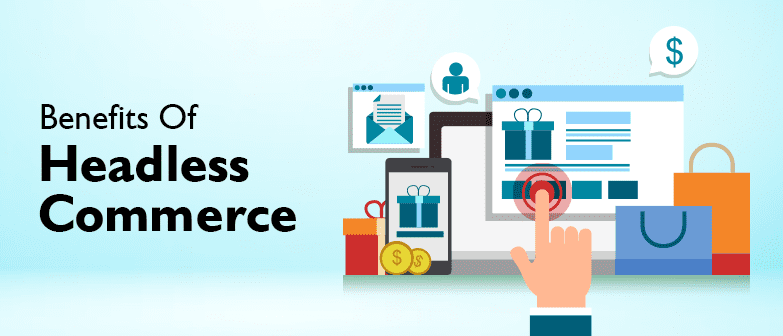
Headless commerce fundamentally alters how online stores manage content and execute marketing strategies. By decoupling the frontend presentation layer from the backend commerce system, it unlocks unprecedented flexibility and efficiency in content creation, management, and delivery. This approach allows for a more agile and responsive approach to marketing, enabling businesses to adapt quickly to changing market demands and customer preferences.The separation of frontend and backend allows for a more streamlined workflow.
Content creators can focus on producing high-quality content without being constrained by the limitations of a tightly coupled system. Marketing teams gain the ability to quickly deploy campaigns across multiple channels, personalizing the experience for each customer segment. This agility is critical in today’s fast-paced digital landscape.
Streamlined Content Creation and Management
Headless commerce significantly simplifies content creation and management for online stores. Instead of being locked into a monolithic system, marketers can use a headless CMS (Content Management System) to create and manage all website content – product descriptions, blog posts, marketing copy, and more – from a central location. This centralized approach minimizes inconsistencies and simplifies updates across all channels.
Editors can work efficiently, focusing on content quality rather than technical limitations. Changes are deployed quickly and easily, ensuring that the website always reflects the latest information.
Advantages of a Headless CMS for Product Information and Marketing Materials
A headless CMS offers several key advantages over traditional CMS solutions in the context of managing product information and marketing materials. It provides greater flexibility in content formatting and delivery, allowing for dynamic content updates based on user behavior and preferences. This allows for personalized experiences, improved , and more effective marketing campaigns. For example, a retailer could use a headless CMS to dynamically adjust product descriptions based on the user’s location or past purchase history.
Furthermore, the decoupled architecture allows for easy integration with other marketing tools and platforms, streamlining workflows and enhancing efficiency.
Headless Commerce and Improvements
Headless commerce significantly improves and organic reach. Because the content is decoupled from the presentation layer, it can be easily optimized for search engines. This includes features such as structured data markup, which is easier to implement in a headless architecture. Furthermore, the ability to dynamically adjust content based on search terms and user behavior allows for more targeted and relevant content, which boosts search engine rankings.
For instance, a headless system can dynamically generate meta descriptions based on the specific product being viewed, leading to higher click-through rates from search engine results pages (SERPs). This allows for a more granular approach to , leading to improved organic traffic and higher conversion rates.
Personalized Content Delivery to Customer Segments
Headless commerce excels at delivering personalized content to different customer segments. By integrating with customer data platforms (CDPs) and other analytics tools, headless systems can identify and target specific customer groups with tailored messaging and offers. This allows for more effective marketing campaigns, higher engagement rates, and ultimately, increased sales. For example, a retailer could use a headless system to display personalized product recommendations based on a customer’s browsing history or past purchases.
This level of personalization significantly improves the customer experience and strengthens brand loyalty.
Hypothetical Marketing Campaign Using a Headless Commerce System
Let’s imagine a hypothetical marketing campaign for a clothing retailer using a headless commerce system.
Campaign Goal: Increase sales of summer clothing by 20% in June.
Target Audience: Customers who have previously purchased summer clothing or shown interest in summer-related products.
Campaign Strategy: Utilize personalized email marketing, targeted social media ads, and on-site promotions. The headless CMS will dynamically update product descriptions, images, and pricing based on the user’s browsing history and location. For example, customers in warmer climates might see different product recommendations than those in cooler regions.
Implementation: The headless CMS will manage all campaign content, including email templates, social media ad copy, and website banners. Real-time analytics will track campaign performance and allow for dynamic adjustments. A/B testing will be employed to optimize messaging and creative assets.
Expected Outcome: Increased engagement and conversion rates due to personalized messaging and targeted promotions. Improved brand awareness and stronger customer loyalty through a more engaging and relevant shopping experience.
Security and Maintainability of Headless E-commerce Solutions
Headless commerce, while offering significant advantages in flexibility and scalability, introduces unique security and maintenance considerations. The decoupled architecture, while empowering, also necessitates a more nuanced approach to safeguarding data and ensuring the system’s ongoing smooth operation. Understanding these aspects is crucial for successful headless implementation.Security considerations in headless architectures differ from traditional monolithic systems due to the distributed nature of the components.
The separation of the frontend and backend introduces multiple points of potential vulnerability. Each component—from the API to the CMS and the various microservices—requires its own robust security measures. This includes implementing appropriate authentication and authorization mechanisms, regularly updating software and dependencies, and conducting thorough penetration testing. Data encryption both in transit and at rest is paramount.
Furthermore, API security, including input validation and rate limiting, is crucial to prevent attacks such as denial-of-service (DoS).
Security Measures in Headless Commerce
Implementing a layered security approach is essential. This involves securing each component individually and focusing on the communication channels between them. For example, robust API gateways can act as a central point of control, enforcing authentication, authorization, and rate limiting policies. Employing HTTPS for all communication channels is non-negotiable. Regular security audits and penetration testing should be scheduled to identify and address vulnerabilities proactively.
Furthermore, choosing reliable and reputable third-party services for components like payment gateways and hosting providers significantly reduces the risk of security breaches. Investing in a well-defined security policy and training employees on security best practices is crucial for maintaining a secure headless commerce environment.
Maintaining and Updating a Headless Commerce System
Maintaining a headless system requires a more agile and iterative approach compared to traditional monolithic platforms. Because of the modular nature, updates and maintenance can be performed on individual components without affecting the entire system. This allows for faster deployment of bug fixes and new features. However, this modularity necessitates a robust version control system and a well-defined deployment pipeline.
Continuous integration and continuous delivery (CI/CD) pipelines are essential for automating the build, testing, and deployment processes, ensuring seamless updates and minimizing downtime. Regular monitoring and logging of all system components are crucial for identifying and addressing issues promptly. Automated testing, including unit, integration, and end-to-end tests, should be implemented to ensure the stability and functionality of the system after updates.
Data Integrity and Compliance in a Headless Environment
Ensuring data integrity and compliance in a headless architecture demands a meticulous approach. Data consistency across different components must be maintained through careful design and implementation of data synchronization mechanisms. This often involves employing robust data management tools and strategies. Compliance with regulations like GDPR and CCPA requires implementing features such as data subject access requests (DSAR) and data deletion capabilities across all system components.
Regular data backups and disaster recovery plans are crucial to ensure business continuity and prevent data loss. Auditing mechanisms should be integrated into the system to track data changes and ensure accountability. Finally, careful selection of technology and third-party services that comply with relevant regulations is paramount.
Maintenance Requirements: Headless vs. Traditional
Compared to traditional monolithic e-commerce platforms, headless systems often require a more specialized skillset for maintenance. While traditional platforms might rely on a single vendor for support, headless architectures often involve managing multiple components and potentially several third-party vendors. This requires expertise in various technologies and a strong understanding of the interconnectedness of different system components. However, the modular nature of headless systems allows for more granular updates and maintenance, potentially reducing overall downtime compared to monolithic systems where a single update can affect the entire platform.
The initial setup and configuration of a headless system might be more complex, but the long-term maintenance benefits, such as faster deployments and targeted updates, can outweigh the initial investment.
Challenges in Managing Headless Commerce Infrastructure and Their Solutions
| Challenge | Solution |
|---|---|
| Increased complexity in managing multiple components | Implement robust DevOps practices, utilize containerization (e.g., Docker), and leverage orchestration tools (e.g., Kubernetes). |
| Ensuring consistent data synchronization across different components | Employ a robust data management strategy, utilizing tools like message queues (e.g., RabbitMQ) or real-time data synchronization services. |
| Maintaining security across multiple touchpoints | Implement a layered security approach, including API gateways, robust authentication mechanisms, and regular security audits. |
| Higher initial setup and configuration costs | Plan carefully, choose appropriate technologies, and consider the long-term cost savings from improved scalability and flexibility. |
| Need for specialized skills in managing a diverse technology stack | Invest in training and development for your team or consider outsourcing certain aspects of the management to specialized providers. |
Cost Considerations and ROI of Headless Commerce
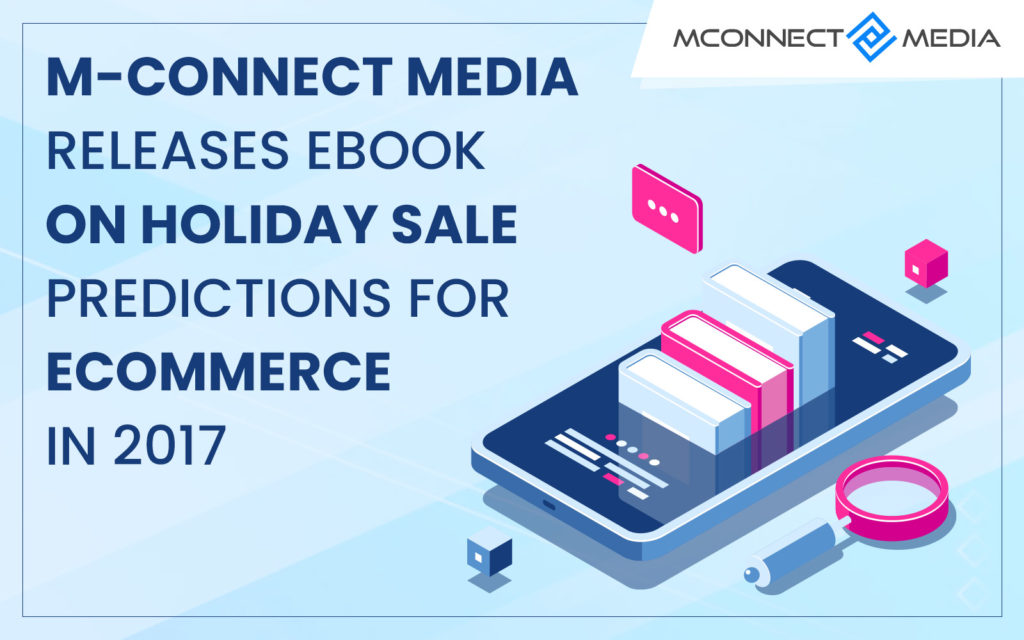
Switching to a headless commerce system requires careful consideration of both upfront and ongoing costs. While the initial investment might seem higher than a traditional setup, the long-term benefits, including increased revenue and operational efficiency, often outweigh the initial expenditure. Understanding these costs and their potential impact on your ROI is crucial for making an informed decision.
Initial Investment Costs
Implementing a headless commerce system involves several key initial investment costs. These include the costs associated with selecting and integrating various components of the architecture, such as the headless CMS, the storefront, and any third-party integrations. Development costs, including the time and expertise required to build and customize the system to your specific needs, can also be significant.
Furthermore, migration of existing data from a legacy system can be a substantial undertaking, requiring dedicated resources and potentially specialized expertise. Finally, training your team on the new system is an essential, yet often overlooked, cost factor. These initial costs should be meticulously budgeted for and accounted for when evaluating the overall ROI.
Ongoing Maintenance and Operational Costs
While the initial investment is substantial, the ongoing costs of maintaining a headless commerce architecture are also important to consider. These include the ongoing fees associated with software licenses, hosting, and third-party integrations. Regular updates and security patches are essential to ensure the system’s stability and performance, adding to the operational costs. Additionally, the ongoing need for skilled developers and system administrators to manage and maintain the system contributes to these expenses.
Proactive maintenance and monitoring are key to minimizing unexpected downtime and associated costs.
Increased Revenue and Improved ROI Through Headless Commerce
Headless commerce can significantly boost revenue and improve ROI in several ways. The enhanced customer experience, driven by personalized content and seamless omnichannel experiences, leads to increased customer satisfaction and loyalty. This translates to higher conversion rates and repeat purchases. Furthermore, the scalability and flexibility of a headless architecture allow businesses to quickly adapt to changing market demands and introduce new features and functionalities, leading to increased sales and market share.
For example, a company that successfully launched a new mobile app leveraging its headless system saw a 30% increase in mobile sales within the first quarter.
Long-Term Cost Savings Through Scalability and Flexibility
One of the most significant long-term advantages of headless commerce is its scalability and flexibility. Unlike monolithic systems, which can become expensive and cumbersome to scale, a headless architecture allows businesses to easily adapt to growing demands without significant infrastructure overhauls. This flexibility also allows for easier integration of new technologies and channels, minimizing the cost and complexity of future expansions.
A company that migrated to a headless system reported a 20% reduction in infrastructure costs over a two-year period, due to optimized resource allocation and reduced reliance on costly monolithic systems.
Cost-Benefit Analysis: Headless vs. Traditional E-commerce
| Feature | Headless Commerce | Traditional E-commerce |
|---|---|---|
| Initial Investment | High (development, integration, migration) | Lower (pre-built platform) |
| Ongoing Maintenance | Moderate (software licenses, hosting, updates) | Moderate to High (platform updates, security patches) |
| Scalability | High (easy adaptation to growth) | Low (limited scalability, costly upgrades) |
| Flexibility | High (easy integration of new technologies and channels) | Low (limited customization options) |
| Customer Experience | High (personalized experiences, omnichannel capabilities) | Moderate (limited personalization, channel silos) |
| Long-Term ROI | High (increased revenue, reduced operational costs) | Moderate (potential for high costs with growth) |
Ultimate Conclusion: The Benefits Of Headless Commerce The Era Of Selling Online
In the fast-paced world of online retail, adaptability is key. Headless commerce offers a powerful solution, providing the flexibility and scalability needed to thrive. By decoupling the frontend and backend, businesses can create seamless, personalized experiences, optimize for speed and performance, and easily integrate new technologies. While there’s an initial investment, the long-term benefits—increased revenue, improved ROI, and a more resilient online presence—make headless commerce a compelling strategy for businesses aiming to dominate the digital marketplace.
It’s not just about technology; it’s about creating a future-proof e-commerce strategy.
General Inquiries
What are the biggest challenges in implementing headless commerce?
The biggest challenges often involve integrating disparate systems, managing increased complexity, and finding skilled developers with expertise in the necessary technologies. Proper planning and a phased approach are crucial.
Is headless commerce suitable for small businesses?
While the initial investment might seem higher, headless commerce can be scaled to fit businesses of all sizes. Starting with a smaller implementation and gradually expanding as needed is a viable strategy for smaller businesses.
How does headless commerce impact ?
Headless commerce doesn’t inherently impact negatively. However, careful implementation and proper strategies are still vital. Focusing on content quality, site speed, and structured data remains important.
What are some popular headless CMS options?
Popular headless CMS options include Contentful, Strapi, Sanity, and Prismic, each offering different features and strengths.
